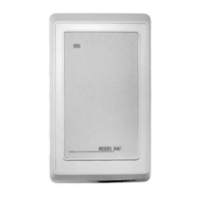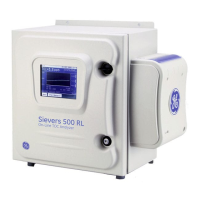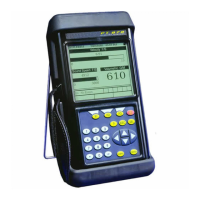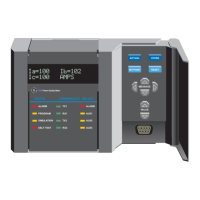PanaFlow™ LC User’s Manual 79
Chapter 4. Error Codes and Troubleshooting
4.4 Fluid and Pipe Problems
If preliminary troubleshooting with the Error Code Messages and the Diagnostic Parameters indicates a
possible problem, proceed with this section. Measurement problems fall into two categories:
•Fluid problems
•Pipe problems
Read the following sections carefully to determine if the problem is related to the fluid or the pipe. If the
instructions in this section fail to resolve the problem, contact BHGE for assistance.
4.4.1 Fluid Problems
Most fluid-related problems result from a failure to observe the flow meter system installation instructions,
as described in Chapter: Installation.
If the physical installation of the system meets the recommended specifications, it is possible that the fluid
itself may be preventing accurate flow rate measurements. The fluid being measured must meet the
following requirements:
• The fluid must be homogeneous, single-phase, relatively clean and flowing steadily.
Although a low level of entrained particles may have little effect on the operation of the XMT1000,
excessive amounts of solid particles will absorb or disperse the ultrasound signals. This interference with
the ultrasound transmissions through the fluid will cause inaccurate flow rate measurements. In addition,
temperature gradients in the fluid flow may result in erratic or inaccurate flow rate readings.
• The fluid must not cavitate near the measurement point.
Fluids with a vapor pressure relatively close to process pressure may cavitate near the measurement point.
Cavitation can usually be controlled through proper system design.
• The fluid must not excessively attenuate ultrasound signals.
Some fluids, particularly those that are very viscous, readily absorb ultrasound energy. In such a case,
signal warning and error message will appear on the display screen to indicate that the ultrasonic signal
strength is insufficient for reliable measurements.
• The fluid soundspeed must not vary excessively.
The XMT1000 will tolerate relatively large changes in the fluid sound speed, as may be caused by
variations in fluid composition and/or temperature. However, such changes must occur slowly. Also,
fluctuations in fluid sound speed due to changes in temperature will likely recover independently. Rapid
fluctuations in the fluid sound speed, to a value that is beyond ± 20% from that programmed into the
XMT1000, will result in erratic or inaccurate flow rate readings. This may occur when changing batch
fluids.
Note: Refer to Chapter 3: Programming, to make sure the appropriate soundspeed is programmed into the
meter.
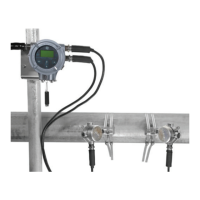
